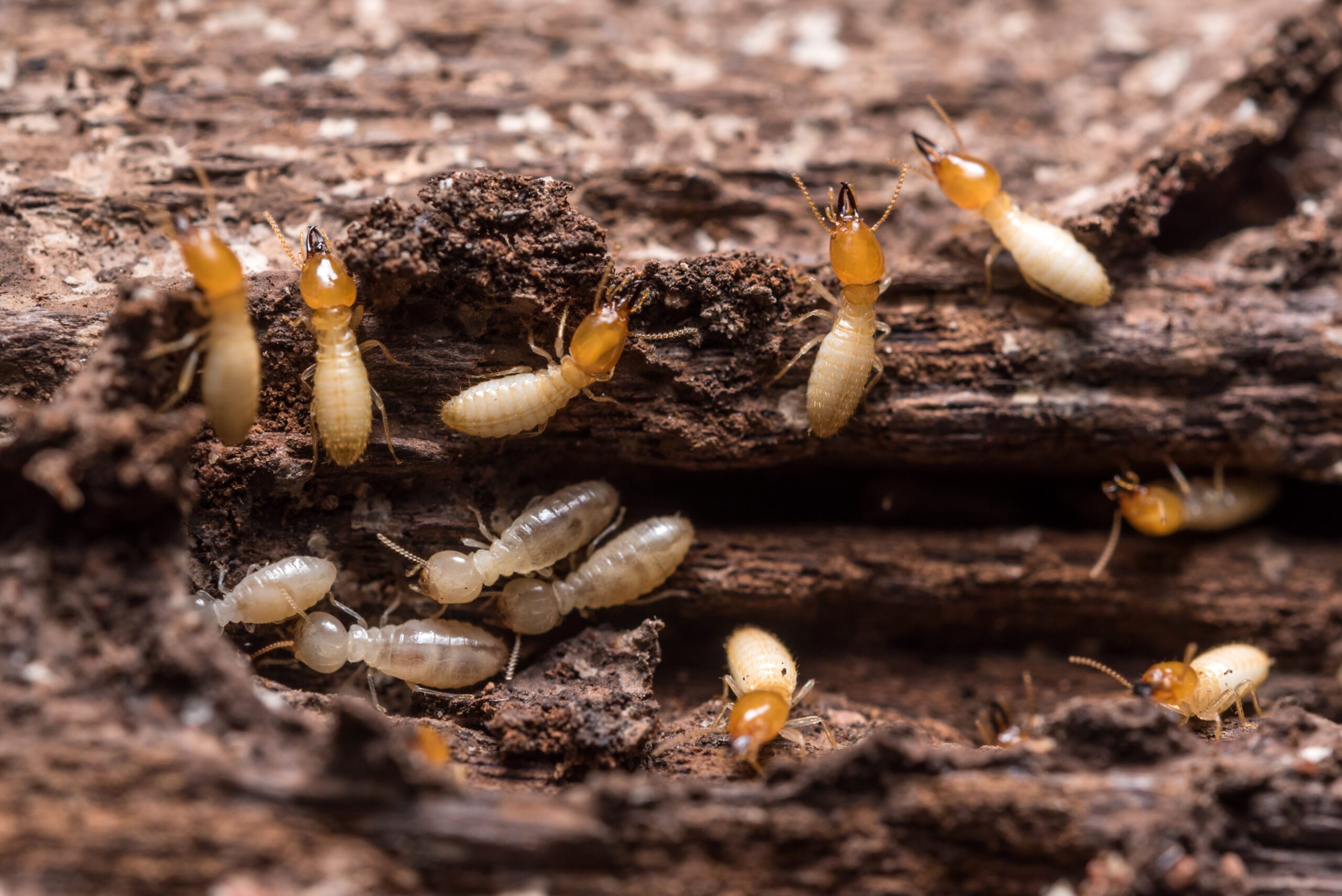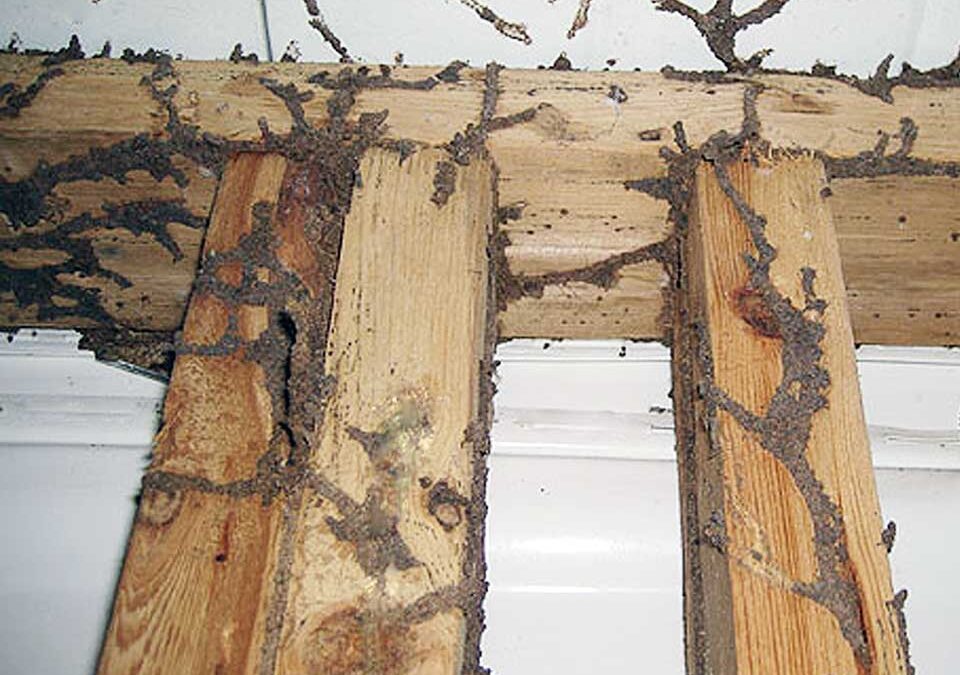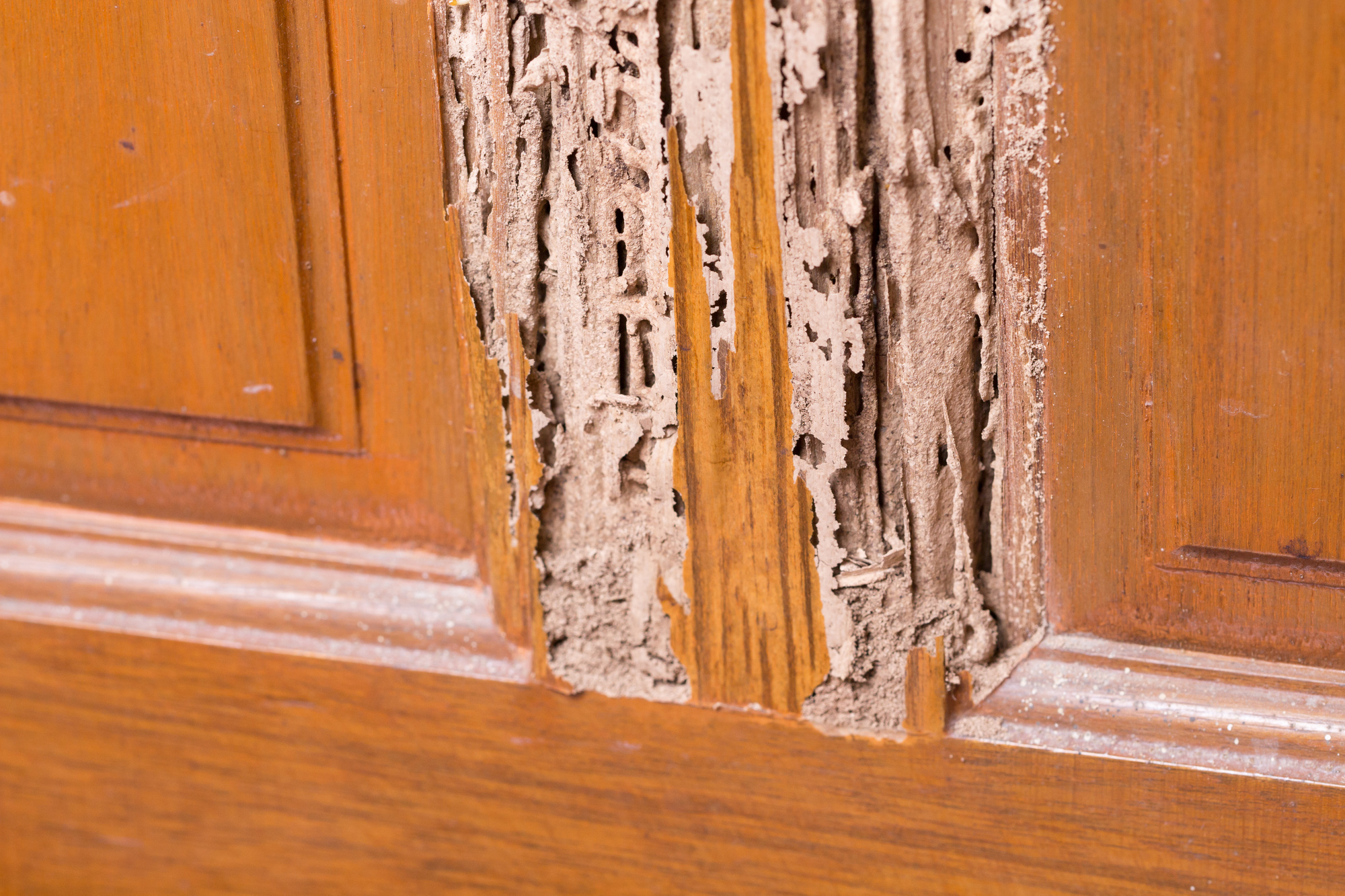Florida’s subtropical climate featuring ample humidity, warm temperatures, and generally mild winters gives termites the opportunity to stay active and feast on wood structures almost year-round. In Port Charlotte, a popular coastal destination on Florida’s Gulf Coast, these wood-devouring pests can quietly invade single-family homes, short-term rentals, or commercial sites through foundation gaps, attic openings, or direct wood-to-soil contact. By the time you notice mud tubes along walls or hollow-sounding beams, termites may have already compromised significant structural elements. This service page clarifies why termites thrive in Florida, the common warning signs of an infestation, and why enlisting a professional termite exterminator for termite treatments is essential to preserving your property’s stability and occupant safety.
Whether you manage a property in Port Charlotte or also serve the nearby locales of Englewood and Punta Gorda, detecting termites early and leveraging specialized, multi-layer solutions safeguards occupants from advanced wood damage, escalating repair costs, and recurring do-it-yourself efforts that often overlook hidden colonies or ongoing queen egg production hidden behind walls or in crawl spaces.
Why Termites Flourish in Florida
Mild Winter Weather
In colder parts of the country, freezing winters typically suspend or kill termites for months. Florida’s gentle cold season rarely dips near freezing, allowing termites to feed and breed indoors or outdoors nearly all year. Climate-controlled interiors (hovering around 65–85°F) further eliminate seasonal dormancy, letting eggs, nymphs, and adult termites persist unless occupant or manager actions disrupt them.
Dampness & Warmth
Subterranean termites require moist soil to build protective tunnels (mud tubes) for safe wood foraging. Florida’s frequent rain, lawn irrigation, or minor plumbing leaks maintain high humidity that these termites love. Drywood termites, meanwhile, enter through roof eaves or attic cracks, needing minimal moisture to colonize wooden rafters or beams. Florida’s mild winter fosters both subterranean and drywood termite survival year-round.
Numerous Wooden Structures
From wooden frames and baseboards to decks and fences, Florida properties offer abundant cellulose material for termites to devour if occupant or property manager detection comes too late. Termites eat wood from the inside out, leaving only a thin façade, often concealing their presence until advanced damage is done.
Rapid Colony Growth
A single termite queen lays numerous eggs daily, quickly expanding worker populations that extend to new wooden areas. Subterranean termites can spread via underground networks, while drywood termites nest in rafters or furniture if occupant or manager vigilance fails to catch them. A small, unnoticed termite cluster soon escalates, compromising multiple rooms or floors.

Telltale Signs of a Termite Infestation
- Mud Tubes
- Pencil-thin tunnels along foundation walls, support beams, or crawl spaces, built by subterranean termites to maintain moisture while seeking wood.
- Often found on exterior walls, in basements, or near footings.
- Pencil-thin tunnels along foundation walls, support beams, or crawl spaces, built by subterranean termites to maintain moisture while seeking wood.
- Discarded Wings
- After mating, swarmer termites drop translucent wings, often found around windowsills, doorways, or light fixtures.
- Indicates a recently formed or nearby termite colony.
- After mating, swarmer termites drop translucent wings, often found around windowsills, doorways, or light fixtures.
- Hollow or Damaged Wood
- Termites devour wood internally, leaving a thin outer shell that sounds hollow when tapped.
- Slight blistering or peeling paint can mask interior tunnels.
- Termites devour wood internally, leaving a thin outer shell that sounds hollow when tapped.
- Drywood Termite Pellets (Frass)
- Tiny, ridged pellets akin to sawdust near holes in beams or wood furniture.
- Proof that drywood termites are expelling waste from active tunnels.
- Tiny, ridged pellets akin to sawdust near holes in beams or wood furniture.
- Swarmers
- Winged termites emerging in warm, humid spells to start new nests.
- Spotting swarmers indoors strongly implies a large, well-established colony in or near the structure.
- Winged termites emerging in warm, humid spells to start new nests.
- Windows/Doors That Stick
- Wooden frames compromised by termite tunneling can swell or warp, making windows or doors tough to open or close.
- Coupled with other indicators, a strong sign of hidden termite foraging.
- Wooden frames compromised by termite tunneling can swell or warp, making windows or doors tough to open or close.
Why Overlooking Termites Is Risky
Structural Undermining
Termites silently consume interior wood, weakening support beams, floor joists, or rafters. Neglecting early warning signs can result in sagging floors, cracked walls, or partial collapse, requiring costly reconstruction or occupant relocation.
Colony Proliferation
Subterranean termites, in particular, expand underground galleries, invading adjacent properties if occupant or manager vigilance remains low. Drywood termites may form multiple satellite nests in rafters, furniture, or attic beams.
Soaring Treatment & Repair Costs
Minor termite indicators found early may only need partial foam or spot treatments. Delaying until termites infest multiple floors or behind walls often necessitates occupant displacement for entire-structure fumigation or repeated chemical usage, raising occupant inconvenience and final outlays.
Anxiety & Insurance Limitations
Many homeowner’s insurance policies exclude termite damage, leaving owners liable for expensive repairs. The worry over unseen wood destruction intensifies occupant stress until professionals confirm termite eradication.

Why a Professional Termite Exterminator Is Critical
Comprehensive Inspections & Colony ID
A termite exterminator explores attics, foundations, crawl spaces, or yard edges for mud tubes, droppings (frass), or softened wood. Distinguishing subterranean vs. drywood termites determines whether entire-structure fumigation, soil termiticides, or localized foam injections best fit occupant needs.
Colony-Wide Elimination
DIY sprays might kill surface termites, sparing hidden queens or deeper populations behind walls. Professional termite control typically blends:
- Soil Termiticides: Creating chemical barriers under or around foundations for subterranean species.
- Bait Stations: Slow poisons that worker termites share with the colony.
- Fumigation (Tenting): Needed for severe or multi-room drywood termite problems.
- Localized Foam/Liquid Treatments: Used for smaller, confirmed termite pockets.
Safe, Properly Applied Chemicals
Inexpert chemical usage may harm occupants or the environment. Certified pros strategically place termiticides or fumigate entire buildings, ensuring thorough termite contact while safeguarding occupant well-being.
Moisture & Entry Prevention
Subterranean termites rely on moist soil. Occupant synergy fixing leaks, diverting water away from foundations starves termite viability. Drywood termites usually enter through roof cracks or attic vents; sealing eaves of roof lines avoids re-entry once extermination is done.
Monitoring & Service Contracts
Many termite exterminators provide warranties or scheduled inspections, ensuring emergent mud tubes, frass, or swarmer sightings receive swift attention. Occupants gain assurance new colonies are destroyed before major structural damage ensues.
Common Methods for Termite Treatments
- Inspection & Species Distinction
- Technicians check foundations, attic beams, basement corners, or yard areas for mud tubes, frass, or hidden wood damage.
- Determining subterranean or drywood termites clarifies if partial foam or entire-structure fumigation best serves occupant interests.
- Technicians check foundations, attic beams, basement corners, or yard areas for mud tubes, frass, or hidden wood damage.
- Soil Termiticides
- Applied for subterranean termites, forming barriers under or around foundations.
- Termites crossing treated soil pick up poison, ultimately collapsing their nest from within.
- Applied for subterranean termites, forming barriers under or around foundations.
- Bait Stations
- Placed around property perimeters, slow-acting toxins carried by worker termites to queens and nestmates.
- Perfect for consistent coverage where occupant or manager detection is sparse.
- Placed around property perimeters, slow-acting toxins carried by worker termites to queens and nestmates.
- Fumigation (Tenting)
- Ideal for multi-room or multi-floor drywood termite invasions. The property is tented, filled with gas pervading deep wood layers.
- Occupants vacate temporarily, returning once the structure is ventilated and termite-free.
- Ideal for multi-room or multi-floor drywood termite invasions. The property is tented, filled with gas pervading deep wood layers.
- Localized Treatments
- Smaller pockets may require foam or liquid spot injections.
- Follow-up ensures no overlooked nest expansions or secondary colonies remain.
- Smaller pockets may require foam or liquid spot injections.
- Moisture Reduction & Wood Repairs
- Fixing leaky pipes, removing wood-soil contact, or replacing damp wood stymies subterranean termites.
- Sealing eaves or attic cracks hinders drywood termite swarmers from infiltrating roof beams.
- Fixing leaky pipes, removing wood-soil contact, or replacing damp wood stymies subterranean termites.
- Annual Inspections & Warranty
- Routine occupant or manager checks for fresh mud tubes, discarded wings, or frass.
- Swift occupant or professional responses to suspicious signs cut off new termite colonies before they spread widely.
- Routine occupant or manager checks for fresh mud tubes, discarded wings, or frass.
- Inspection & Species Distinction

Serving Port Charlotte, Englewood, Punta Gorda
Although termites thrive throughout Florida’s mild winter environment, this page is focused on Port Charlotte along with Englewood and Punta Gorda where occupant synergy plus expert termite treatments prove necessary for total colony destruction or prevention. Florida’s gentle cold season seldom halts termite feeding or breeding cycles, so occupant awareness plus specialized extermination remain key to safeguarding your property from these silent wood-eaters.
Why Choose Us
Florida-Centric Solutions
We unite recognized termite control soil termiticides, fumigation, bait stations alongside occupant synergy (sealing attic cracks, moisture management) designed for Florida’s environment. Occupant or manager diligence plus professional coverage exceeds occupant do-it-yourself attempts that often miss hidden nest expansions behind walls or under floors.
Detailed Inspections
Before applying chemicals, technicians systematically check foundations, attics, basements, or crawl spaces for mud tubes, compromised wood, or leftover swarmers. Subterranean vs. drywood clarifications define whether partial foam or entire-structure fumigation meets occupant or manager needs best.
Safe, Precision Application
Professionals place insecticides responsibly like trenching around foundations for subterranean termites, or tenting entire structures for severe drywood outbreaks maintaining occupant safety. Local foam injections inside beams or furniture precisely eradicate termites while lowering occupant chemical exposure.
Entry & Moisture Prevention
Post-colony elimination, occupant synergy like repairing leaks, sloping soil away from foundations, or sealing roof eaves bars subterranean or drywood swarmers from regaining entry. With Florida’s mild winter enabling year-round termite activity, occupant readiness cements lasting termite resistance.
Monitoring & Warranties
Because fresh colonies might start over time, many termite pros offer occupant warranties or regular inspections, swiftly addressing emergent tubes or droppings. Occupants rest assured new infestations are halted before structural harm re-intensifies.
Next Steps
Noticing mud tubes on your foundation, tapping hollow-sounding wood, or discovering translucent termite wings near window sills? Contact us to learn more or schedule your service. Our termite treatments in Port Charlotte plus Englewood, Punta Gorda combine thorough property checks, proven control methods (soil termiticides, fumigation, bait stations, localized foaming), occupant synergy for moisture control, plus recommended follow-ups destroying current termite colonies while preventing future intrusions.
Act promptly to save occupants from hidden wood damage, occupant alarm about unseen termite foraging, and potential insurance gaps that leave termite repairs uncovered. Rely on our Florida-based termite exterminator expertise to find, eradicate, and block these quiet wood-destroyers, preserving your property’s structural integrity despite Florida’s mild winter environment that otherwise fosters active termite feeding cycles year-round.
